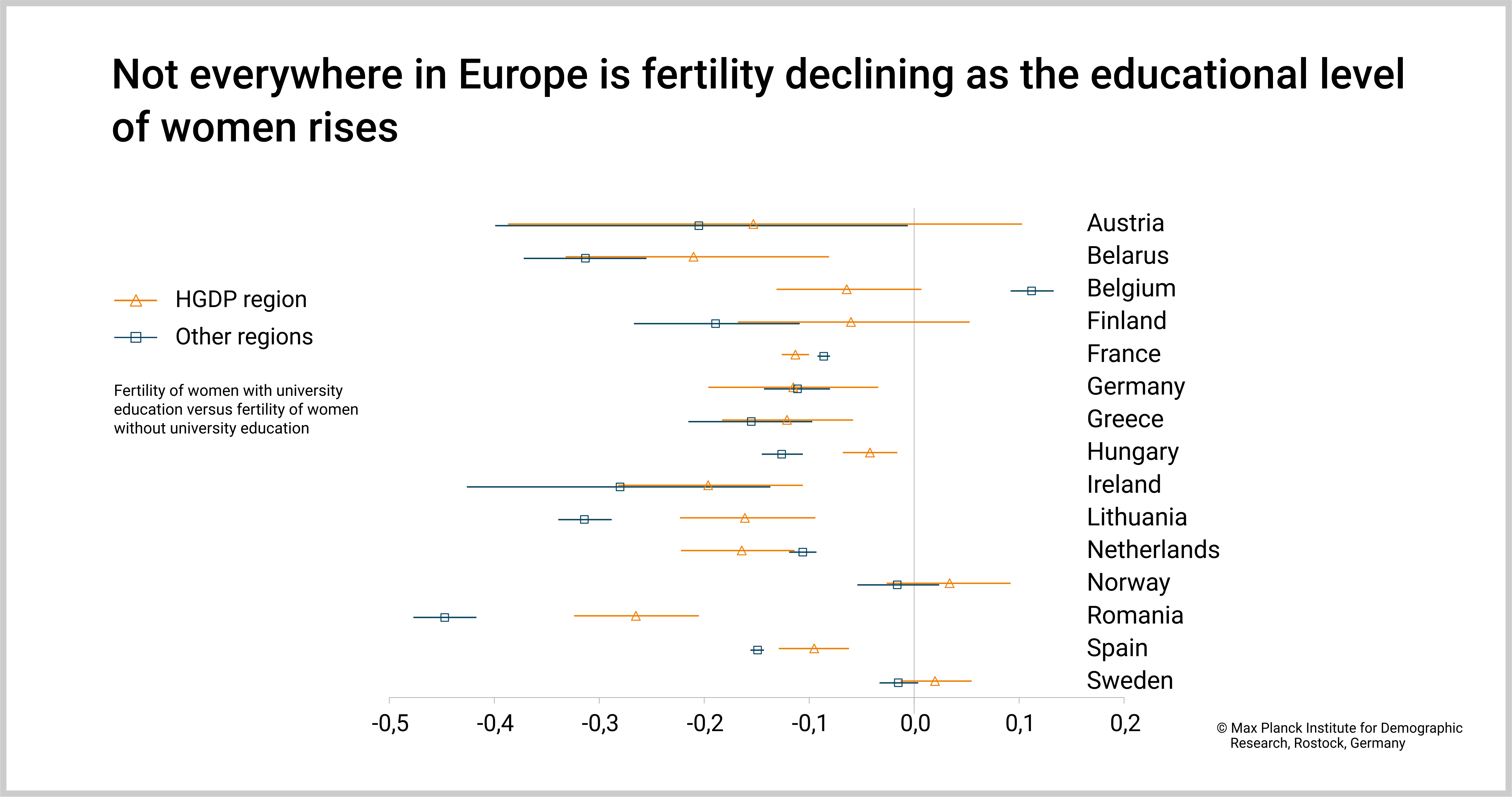August 11, 2020 | News | Interview
Fertility in Europe: Women’s Education Less Influential in Economically Developed Regions

In economically highly developed European regions, women with different educational levels have a more similar number of children than women with different educational levels in less developed regions. © iStockphoto.com/South_agency
Jessica Nisén, research scientist in the Laboratory of Fertility and Well-Being, assessed the relationship between women’s fertility, their education, and the economic development on a regional level in 15 European countries. In this interview, she explains her findings, why she looked into the topic, and why register data are a valuable source.
Ms. Nisén, you recently published a study looking into women’s fertility in different European regions. You examined the relationship between their education, the economic development of the region they live in, and the average number of children they have over their lifetime. What are the main findings?
Generally, our findings underline the variability of educational gradients in women’s fertility and suggest that higher levels of development may be associated with less negative gradients. This means that in the more developed regions, women educated to different levels have numbers of children that are more similar to each other than those of women educated to different levels in less developed regions. This tendency is observed within countries and across all regions of all countries.
Are there differences between countries?
We noted that European countries do not all show this within-country tendency across regions. The strongest evidence for a systematic association between regional development and the educational gradient is witnessed in Central and Eastern European countries.
Could you give us an example?
Yes, sure. High-educated women in Hungary have only 0.04 fewer children than medium-educated women in the most developed region, compared to 0.13 fewer children in other areas. In Belgium it looks different: High-educated women there have 0.06 fewer children than medium-educated women in the most developed region, but 0.11 more children in other areas.

In Eastern and Central European countries, like Hungary and Lithuania, women who attended university are more similar in their number of children to the women with professional training, if they live in the economically highest developed region within the country. Similar tendency is witnessed also in some other European countries. © MPIDR
Download the figure (PNG File, 377 kB)
So, you found, that there are differences between Western European countries and Central and Eastern European ones. Is this one of the reasons why you looked into this topic?
Well, the starting point of our study was to provide a comprehensive account of educational differences in the cohort fertility rate at the sub-national regional level for the first time ever. By examining sub-national regional patterns we wanted to improve our understanding of national patterns, as regionally varying contextual conditions may affect fertility.
Why was this specific focus on European regions especially worth observing for you?
I find it interesting that there is variation in the gradient also at the sub-national regional level. This adds to our understanding that educational gradients in women’s fertility are not set in stone but vary across time and place. This suggests that contextual factors are important for the emergence (or lack) of the relationship between education and the number of children women have. Further, given that the shares of women with high educational attainment are particularly large in well-developed regions, these findings may help to explain why overall fertility has been relatively high in well-developed regions in Europe in recent times.
Do you see any limitations for this kind of study?
At the regional level, internal migration across regions and differences in population composition across regions can also cause these variations we witness now. Our study could not validate mechanisms, such as what role these different factors play; we simply described patterns.
This study is a collaboration of researchers across Europe who use register or other administrative data sources in their work on fertility and family demography. What exactly did the cooperation look like?
The Max Planck Institute for Demographic Research founded a network of researchers who study fertility drawing on these data in 2016. Our study is an outcome of this initiative: It is based on data from population registers, censuses, and large-sample surveys for 15 European countries. In the Nordic countries, register data has been available for demographic research for a longer time than in other European countries. But such availability has more recently been increasing in other parts of Europe too, for instance in Belgium and the Netherlands. These data provide a valuable source for studying childbearing patterns. They are typically highly reliable and allow studying population subgroups with a longitudinal perspective.
Original publication
Nisén, J., Klüsener, S., Dahlberg, J., Dommermuth, L., Jasilioniene, A., Kreyenfeld, M., Lappegård, T., Li, P., Martikainen, P., Neels, K., Riederer, B., te Riele, S., Szabó, L., Trimarchi, A., Viciana, F., Wilson, B., Myrskylä, M.: Educational differences in cohort fertility across sub-national region in Europe. European Journal of Population. (2020) DOI 10.1007/s10680-020-09562-0